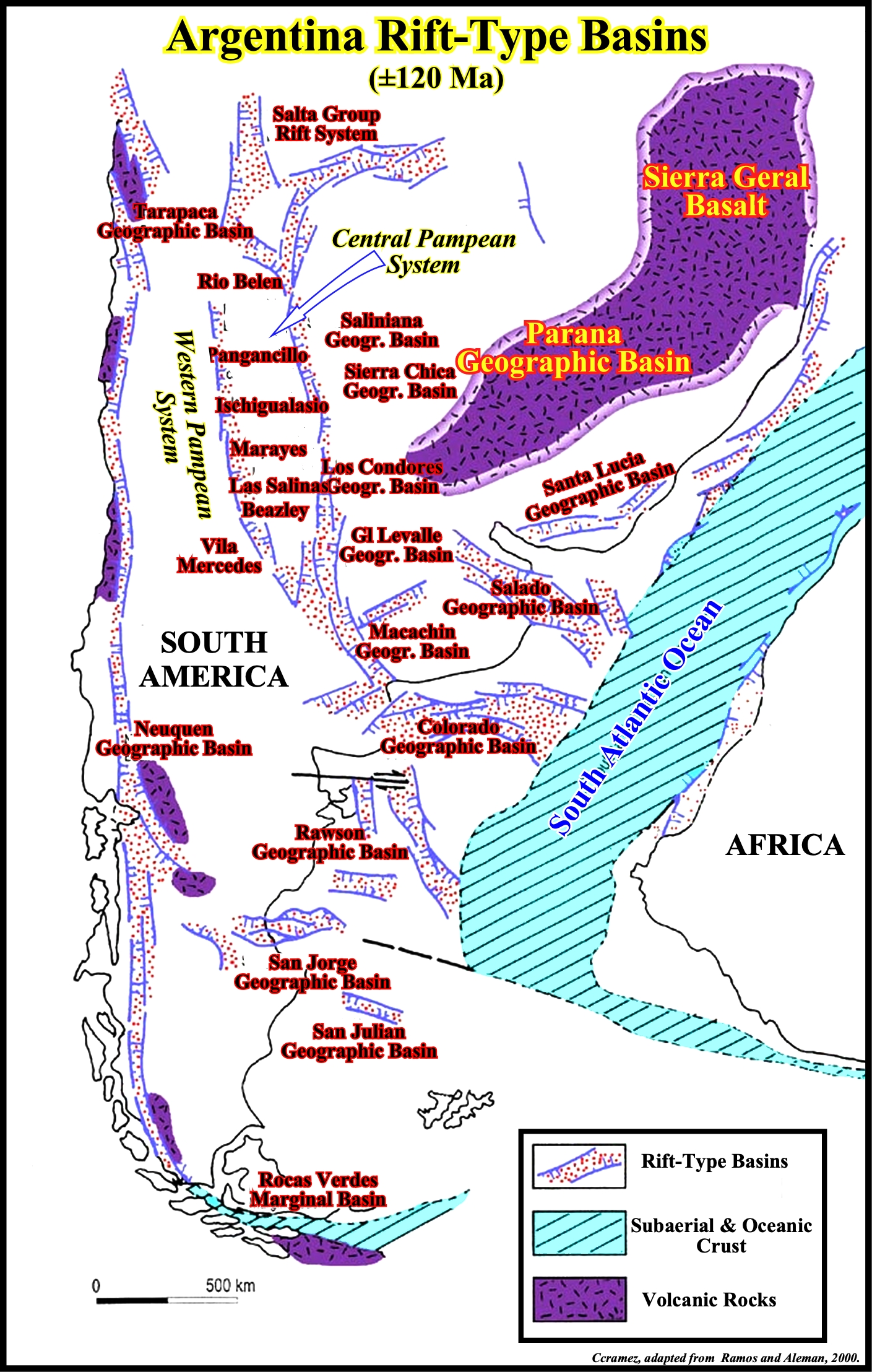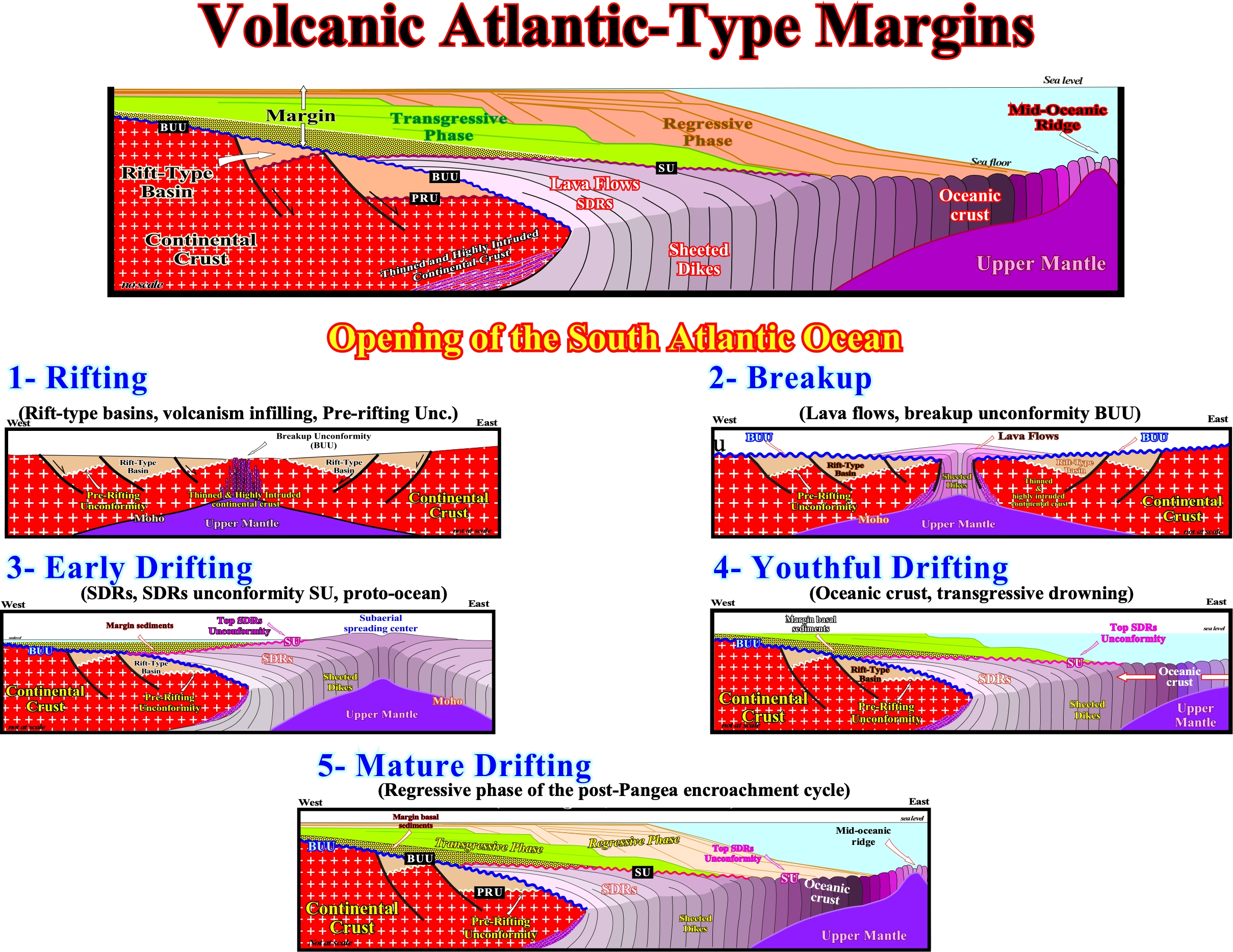

Argentina Offshore
Rawson Offshore

The Early Cretaceous Rift-Type Basins, which predate the breakup of the Gondwana continental crust, that is to say, they predate the South Atlantic opening and the associated Atlantic-type divergent margins, strike, roughly, W-E, as depicted in this schematic map. However, other rift-type basins, striking, approximately, N-S are associated with the oblique subduction of the Pacific plate under the Gondwana continental crust. This B-type subduction (Benioff subduction) created on the overriding lithospheric plate, during Jurassic and Cretaceous geological periods, a series of different sedimentary basins (forearc, backarc, intra-arc, etc.,) in which certain phases, characterized by a differential subsidence can be considered as rift-type basins. This type of extension is present all along of the Andes and is responsible not only of the Salt Group Rift System, but the Argentina backarc basins, as well. In fact, geologically speaking, the Neuquen Geographic Basin is one of these backarc basins filled up, mainly, by non-marine sediments with hydrocarbon potential, derived from the uplifted area behind the volcanic arc. Such tectonic extension (σ1 vertical and σ2 striking N-S) contrasts with the extension created by the lengthening of the Gondwana continental crust (σ1 vertical and σ2 striking ± W-E) that precedes the breakup of the lithosphere (see below) and that seems to be induced by a thermal anomaly (uplifted of the isotherms without significant topographic anomaly but with local volcanic extrusions). The infilling of the associated extensional structures (mainly, half-grabens) is, often, quite different of the backarc basins, with a lot of volcanics (e.g., Tobifera formation) and a total absence of potential source rocks.

In 1998, this geological model, was proposed by Total SA's geoscientists (presently TotalEnergies) to explain South Atlantic Opening. As illustrated, it is characterized by five tectono-sedimentary stages: (1) Rifting ; (2) Breakup ; (3) Early Drifting ; (4) Youthful Drifting and (5) Mature Drifting. The rifting stage corresponds to the lengthening of the Gondwana continental crust, which is characterized by a lot of intrusions of the mantle material in the more thinned continental crust, which will be the breakup zone, as the injected mantle material (sheeted dykes) becomes predominant. This stage is characterized by the formation and infilling of rift-type basins that fossilize the pre-rifting unconformity. The infilling sediments are, generally, non-marine, often, with hydrocarbon potential, but volcanic facies are also possible sediments. The breakup stage occurs when the Africa and South America lithospheric plates become individualized by the injection of sheeted dykes. When the sheet dykes outcrop, lava flows toward the continental crust of the new formed plates, fossilizing the breakup unconformity capping the rift-type basins. When the sheeted dykes reach the sea floor, the lava froze forming pillow lava, which is part of the oceanic crust. The early drifting stage is characterized by the deposition of the basal sediments of the Atlantic-type divergent margin between the continent and the sub-aerial spreading center, fossilizing not only the breakup unconformity, but the top SDRs unconformity (SU) as well. The youthful drifting phase starts with the immersion the spreading center and so the formation of the oceanic crust (lava cannot flow under water). The oceanic expansion (seafloor spreading) favor the deposition of the transgressive phase induced by a global sea level rise, in acceleration, and characterized a retrogradation geometry. The mature drifting phase is characterized by the deposition of the regressive phase, induced by a global rise of the sea level, in deceleration, and distinguished by a progradational or forestepping geometry.
Send E-mails to carlos.cramez@bluewin.ch with comments and suggestions to improve this atlas.
Copyright © 2001 CCramez
Last update:
2022